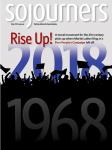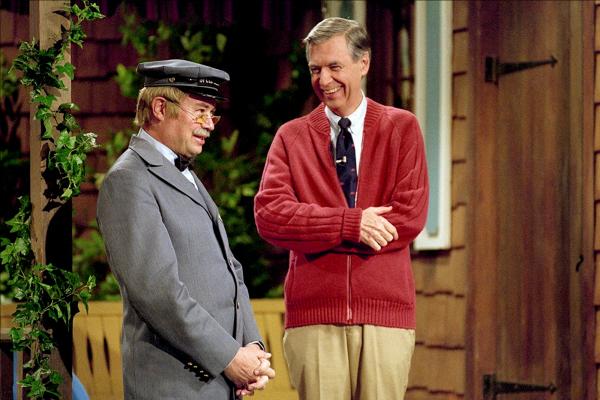MISTER ROGERS’ Neighborhood began running on U.S. public television just over 50 years ago, in February 1968. The anniversary was marked in March by the airing of a tribute special, Mister Rogers: It’s You I Like, on PBS and the release of a Mister Rogers stamp by the U.S. Postal Service. In June, a documentary, Won’t You Be My Neighbor? by Oscar-winning director Morgan Neville, will hit the theaters. And, in Hollywood, a Fred Rogers biopic is forthcoming, starring Tom Hanks as the man in the sweater.
Rogers, who off-screen was an ordained mainline Presbyterian minister, was most famous as a sort of pastor to the nation’s preschoolers. Every day he looked into the camera and conducted a calm, face-to-face conversation with the kids about their feelings, especially their fears. Usually those discussions would lead into a Rogers-composed song. Then Rogers would dramatize those lessons in the Neighborhood of Make-Believe, where several puppet characters, most voiced by Rogers, and a few other adult humans populated a fanciful parallel universe.
When Mister Rogers’ Neighborhood started, the U.S. seemed to be falling apart. The Tet Offensive was raging in Vietnam, and the slaughter seemed futile and endless. Meanwhile, in his first week on the air, Mister Rogers had King Friday XIII of the Neighborhood of Make-Believe building a wall around his castle to keep out people who wanted “change.” Later that year Rogers would host an evening special that tried to help children and their parents find ways to live with the horror of the assassinations of Robert F. Kennedy and Martin Luther King Jr.
Throughout the next three decades, as declining wages and rapidly shifting cultural norms put American families under unprecedented stress, Fred Rogers was there, providing a secure island of love and goodness for the country’s children. His last new episode aired on Aug. 31, 2001, just before all hell broke loose again. Rogers died two years later, from stomach cancer, at age 74.
At my house, the Mister Rogers era began around 1994, when our first child was 2, and continued for another decade, until our local PBS station stopped airing the reruns when our youngest child was 5. I will never forget one of the very first episodes I watched with our oldest son. Earlier in the show, Mister Rogers had shown the children a video of how people make orange juice that visited an orange grove and a juice factory.
Then, in the Neighborhood of Make-Believe, one of the human regulars, Lady Aberlin, appeared carrying a tray with a cut-glass pitcher full of orange juice and several small cups. She walked slowly and ceremoniously among the puppet characters, sharing the juice, holding the cup up to each puppet’s mouth to let it “drink.” She explained to one of the characters that “since we’re neighbors, somehow I wanted us all to have something out of the same pitcher, a little part of the same orange.” Later Mister Rogers commented that it made Lady Aberlin “feel good to give each person something from her one pitcher.”
I was floored. That sequence was nothing more, or less, than a lightly secularized re-enactment of what happens on the horizontal plane in the sacrament of Holy Communion. And Rev. Fred Rogers had to have known it.
That was as explicit as the Christianity ever got on the show, but it was also a pretty typical episode. Day after day, year after year, decade after decade, in his own quiet, thoughtful, and respectful way, Mister Rogers did more to share the living presence of Jesus Christ through the medium of television than all the unctuous televangelists ever have or ever will.
There will never be another like him. So, in this anniversary year, all we can say is: Fred Rogers, pray for us ... please.

Got something to say about what you're reading? We value your feedback!

